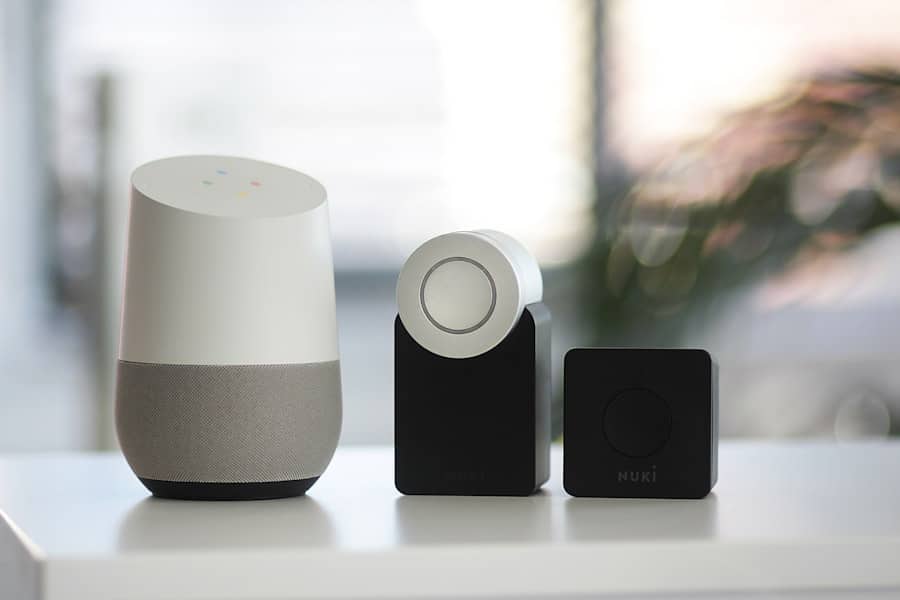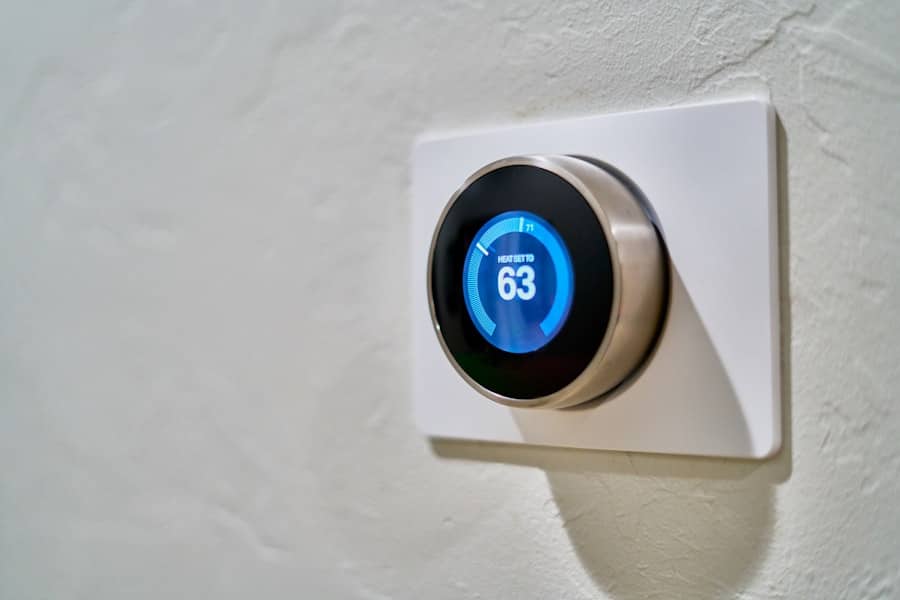In recent years, the advent of smart appliances has revolutionized the way we interact with our homes and manage our energy consumption. These devices, equipped with internet connectivity and advanced sensors, allow users to control and monitor their energy usage remotely.
Smart appliances can play a pivotal role in this landscape by enabling consumers to adapt their energy consumption patterns in response to real-time utility prices. The integration of smart appliances into the home ecosystem not only enhances convenience but also presents an opportunity for significant cost savings. By leveraging technology, homeowners can optimize their energy usage, reducing waste and lowering their utility bills.
However, the true potential of these devices is unlocked when they are synchronized with dynamic utility pricing models. This synchronization allows smart appliances to operate during off-peak hours or when energy prices are at their lowest, ultimately leading to a more sustainable and economically viable approach to energy consumption.
Key Takeaways
- Smart appliances can help consumers save money by adjusting energy consumption based on utility prices.
- AI plays a crucial role in synchronizing smart appliances by analyzing utility prices and optimizing energy usage.
- AI can optimize energy consumption by scheduling appliance usage during off-peak hours when utility prices are lower.
- Synchronized smart appliances can significantly improve energy efficiency and reduce overall utility costs.
- Despite the potential benefits, there are challenges and limitations to consider when using AI to synchronize smart appliances with utility prices.
Understanding the Role of AI in Synchronizing Smart Appliances
Predictive Analytics for Optimal Operation
AI can assess historical pricing data, weather forecasts, and even real-time grid conditions to determine optimal operating times for appliances such as washing machines, dishwashers, and electric vehicles. This allows smart appliances to operate during periods of low energy prices, reducing energy costs for consumers.
Personalized Experience through Machine Learning
Moreover, AI enhances the user experience by learning individual preferences and habits over time. This personalization allows smart appliances to not only respond to external factors like utility prices but also align with the specific needs of the household. For example, if a family typically runs their dishwasher in the evening after dinner, AI can adjust its operation schedule to coincide with lower energy rates during that time.
Convenience, Cost Savings, and Sustainability
This level of adaptability ensures that consumers benefit from both convenience and cost savings while minimizing their environmental impact. By optimizing energy usage and reducing waste, smart appliances powered by AI can make a significant difference in the fight against climate change.
How AI Can Optimize Energy Consumption Based on Utility Prices
AI-driven optimization of energy consumption hinges on its ability to process real-time data and make predictive analyses. By continuously monitoring utility prices and adjusting appliance operation accordingly, AI can significantly reduce energy costs for consumers. For instance, during peak pricing periods when demand is high, AI can delay the operation of energy-intensive appliances until prices drop.
This not only saves money but also alleviates stress on the electrical grid during peak times. Consider a scenario where a smart thermostat is integrated with a smart washing machine. The thermostat can detect when energy prices are at their highest and communicate this information to the washing machine.
Instead of running during peak hours, the washing machine can be programmed to start its cycle during off-peak hours when electricity is cheaper. This seamless communication between devices exemplifies how AI can facilitate a more efficient energy ecosystem, ultimately leading to lower bills and reduced carbon footprints.
The Impact of Synchronized Smart Appliances on Energy Efficiency
The synchronization of smart appliances with utility prices has profound implications for overall energy efficiency. When appliances operate in alignment with real-time pricing data, they contribute to a more balanced load on the electrical grid. This balance is crucial for reducing the need for additional power generation during peak demand periods, which often relies on less efficient and more polluting sources of energy.
Furthermore, synchronized smart appliances can lead to a significant reduction in greenhouse gas emissions. By optimizing energy consumption patterns, households can decrease their reliance on fossil fuels and support the transition towards renewable energy sources.
Challenges and Limitations of AI in Synchronizing Smart Appliances with Utility Prices
Despite the promising potential of AI in synchronizing smart appliances with utility prices, several challenges and limitations must be addressed. One significant hurdle is the variability of utility pricing structures across different regions and providers. Not all utilities offer dynamic pricing models, which can limit the effectiveness of AI-driven synchronization for consumers in those areas.
Additionally, the lack of standardization in communication protocols among different smart devices can hinder seamless integration. Another challenge lies in consumer acceptance and understanding of these technologies. Many homeowners may be hesitant to adopt smart appliances due to concerns about privacy, security, or simply a lack of familiarity with how these systems work.
Educating consumers about the benefits of AI-driven synchronization and addressing their concerns is essential for widespread adoption. Furthermore, ensuring robust cybersecurity measures are in place is critical to protect sensitive data and maintain consumer trust in these technologies.
The Future of AI and Smart Appliances in Utility Price Synchronization
Expanding Opportunities for AI-Driven Optimization
As technology continues to evolve, the future of AI and smart appliances in utility price synchronization appears promising. As more utilities adopt dynamic pricing models and invest in smart grid infrastructure, the opportunities for AI-driven optimization will expand significantly. Enhanced machine learning algorithms will enable smarter predictions regarding energy prices and consumer behavior, leading to even greater efficiencies.
Advancements in IoT Technology
Advancements in Internet of Things (IoT) technology will facilitate better communication between devices and utilities. This interconnectedness will allow for real-time adjustments based on grid conditions and pricing fluctuations, creating a more responsive energy ecosystem.
Growing Demand for Synchronized Smart Appliances
As consumers become increasingly aware of their environmental impact and seek ways to reduce their carbon footprints, the demand for synchronized smart appliances will likely grow, driving further innovation in this space.
Case Studies: Successful Implementation of AI in Synchronizing Smart Appliances
Several case studies illustrate the successful implementation of AI in synchronizing smart appliances with utility prices. One notable example is the partnership between a major utility company and a tech firm specializing in smart home solutions. In this collaboration, they developed an AI-driven platform that allows consumers to monitor real-time energy prices and receive recommendations on when to operate their appliances for maximum savings.
In another instance, a pilot program was launched in a suburban community where participants were provided with smart thermostats and appliances equipped with AI capabilities. The program demonstrated that households could reduce their energy consumption by up to 30% during peak hours by following AI-generated recommendations for appliance usage based on real-time pricing data. These case studies highlight not only the feasibility of such technologies but also their potential for widespread adoption as consumers become more engaged with their energy usage.
The Potential Benefits of AI in Synchronizing Smart Appliances with Utility Prices
The integration of AI into smart appliances represents a transformative shift in how we manage energy consumption within our homes. By synchronizing appliance operation with dynamic utility pricing, consumers can achieve significant cost savings while contributing to a more sustainable energy future. The potential benefits extend beyond individual households; as more consumers adopt these technologies, the cumulative impact on energy efficiency and greenhouse gas emissions could be substantial.
As we continue to navigate an increasingly complex energy landscape characterized by fluctuating prices and growing environmental concerns, the role of AI in optimizing our interactions with smart appliances will only become more critical. Embracing these innovations not only empowers consumers but also paves the way for a more resilient and efficient energy system that benefits everyone involved.
In a recent article on BOPIS (Buy Online, Pick Up In Store), the importance of leveraging technology to streamline consumer experiences is highlighted. Just like how AI is revolutionizing the way smart appliances interact with utility prices, BOPIS is changing the way customers shop by offering convenience and efficiency. Both articles emphasize the role of technology in enhancing everyday tasks and improving overall user satisfaction.
FAQs
What is the role of AI in synchronizing smart appliances with utility prices?
AI plays a crucial role in synchronizing smart appliances with utility prices by analyzing real-time data on energy prices and consumption patterns to optimize the use of appliances and reduce energy costs.
How does AI help in optimizing the use of smart appliances?
AI algorithms can analyze historical and real-time data on energy prices, weather conditions, and user preferences to automatically adjust the operation of smart appliances, such as turning them on or off at the most cost-effective times.
What are the benefits of synchronizing smart appliances with utility prices using AI?
Synchronizing smart appliances with utility prices using AI can lead to cost savings for consumers, reduced strain on the energy grid, and lower overall energy consumption, contributing to a more sustainable and efficient energy system.
How does AI enable smart appliances to respond to dynamic utility prices?
AI enables smart appliances to respond to dynamic utility prices by continuously monitoring and analyzing energy price fluctuations and adjusting their operation to minimize energy costs while meeting the user’s needs.
What are some examples of smart appliances that can be synchronized with utility prices using AI?
Examples of smart appliances that can be synchronized with utility prices using AI include smart thermostats, smart water heaters, smart refrigerators, and smart washing machines, among others.



